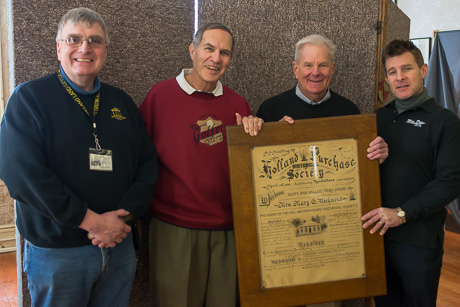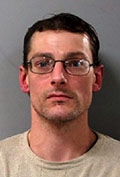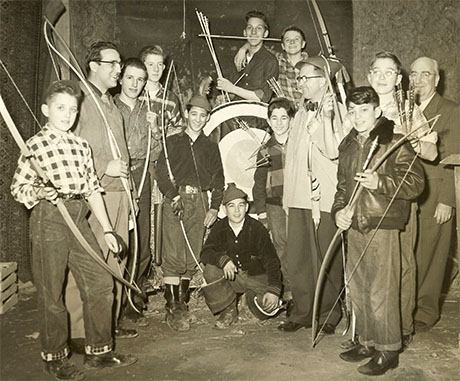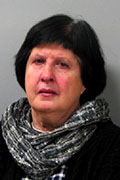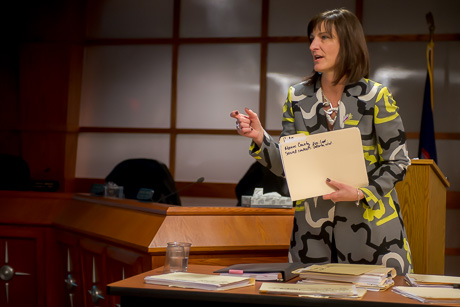They call it "the Lt. Whitcomb incident," Assistant City Manager Gretchen DiFante told the City Council Monday night.
Jeff Whitcomb, a city fire officer, was leading a group of firefighters into a burning building at Ellicott and Swan streets Sept. 18 when he tried to radio critical information to his scene commander, Chief Jim Maxwell.
Whitcomb couldn't get a "grant tone."
That radio message comes from the dispatch center and signals the radio channel is clear and the responder in the field can transmit. Without it, the radio in the responder's hand is not much more than a brick.
After the meeting, Maxwell confirmed there was an issue with Whitcomb's attempt to transmit that day.
"What happened there was the lieutenant was inside and he was trying to radio out and he couldn't, so we thought it was a system failure because he couldn't get the grant tone," Maxwell said. "After we submitted the problem report we got a response back from Harris that the system worked the way it was supposed (to). We were operating at the fire ground on the same channel they dispatch on and dispatch has priority."
The inability for a firefighter in a burning building to transmit, even if only delayed by seconds, can mean the difference between life and death.
"This was a major turning point for us," DiFante said. "That's when I went to my boss and said, 'oh, boy, Mr. Molino, we've got to do something about this.' "
DiFante recognized immediately that not only were lives at stake, but as a matter of her fiduciary responsibility to taxpayers, the city faced a potentially monstrous liability issue if police officers and firefighters were saddled with a communication system that made them vulnerable in moments of crisis.
A year ago, the county switched communication systems for police and fire to a $10 million digital system designed and built by Rochester-based Harris RF.
The need for the new system was largely driven by the FCC and Homeland Security, with a goal of freeing up the frequencies used by the old system and improving interoperability between local departments on a nationwide basis.
The grant money available for the new system came with a hard deadline for launching the Harris system.
Typically, a new communications system can be tested and refined over an 18-month period, which is what Ontario County did, DiFante said.
Genesee County got no time to test its new system before the old system was shut down.
When DiFante researched the issue, she found other jurisdictions facing similar issues with the Harris system. Miami-Dade County had to buy a new system. Las Vegas is tied up in a lawsuit with Harris. Oakland PD has had trouble, including 35 minutes of downtime when President Obama was in town.
The issue, however, she said, isn't with Harris. It's the nature of digital technology. Anybody with cable TV, she said, understands that digital technology is subject to disruption.
"Digital technology is great when it works, but when it doesn't, it causes things to happen," DiFante said.
So DiFante asked her contact at Harris which agency was doing the best with the new system, and she was told, without a doubt, Ontario County.
In her first contact with a communications director in Ontario County, he had a reaction she found common during her research -- those poor people in Genesee County.
"You know what he said -- everybody says the same thing when you tell them you're from Genesee County, 'you know what Gretchen, those poor people over in Genesee County and what they had to do,' " DiFante said.
From Ontario County, she was given the name of a consultant whom Harris is now paying to help the county resolve some of the issues facing the system.
This research, she said, led to the City Fire Department changing its communication protocol.
The volunteer departments in the county are going to the same procedure.
It won't be until March, DiFante said, before all the radios are reprogrammed.
The new system will require scene commanders to carry two radios. One will be used for communicating with dispatch. The other will be tuned to an analog tactical channel, which will be the channel used by firefighters use to communicate with each other while at a fire scene.
There will no longer be an issue with dispatch communications taking priority on the same channel with firefighter-to-firefighter communication.
There remain issues with the system DiFante said, though things have improved dramatically for both the police department and fire department over the past several months.
"We're very close to resolution," DiFante said. "What's happened since October is exciting. I can sleep better at night. This is the only thing that has kept me awake at night since I started my job."
Chief Shawn Heubusch agreed that when the new radio system was first introduced, he was troubled by the communications issues and concerned about the safety of his officers.
"There are some issues, as with any new product that is out there," Heubusch said. "It's constantly being tweaked. As she mentioned, it takes 18 months to vet these things. We didn't have that kind of time, so to put one consultant's words out there, 'we watched sausage being made.' Nobody wants to see sausage being made."
While DiFante held up folders full of trouble reports filed by the city with the county about the radio system, Heubusch said most of those trouble reports were filed months ago.
"They've made great strides in correcting the issues," Heubusch said.
Sheriff Gary Maha confirmed this morning that the county has not received a trouble report from the city since November.
Every radio system has its own issues, Heubusch said. The old system had dead spots in the city, and going back even further, when dispatch was handled by City PD, officers knew there were certain buildings -- such as the Harvester complex -- where they would be out of radio contact while inside.
"There are certain inherent dangers to public safety work that we kind of just take for granted, that we understand are out there," Heubusch said. "Digital technology has come a long way since it was implemented and again we are working on the issues that are in play with this system now and they've made great strides in making our officers and fire officers much safer."
There are issues, DiFante said, with gain control and voice fluctuations.
She also said there are still significant issues with coverage areas in Le Roy, but declined during her presentation to go into detail.
We spoke with Chief Chris Hayward, Le Roy PD, this morning and he confirmed there are ongoing issues that the county and Harris are working diligently to try and resolve.
There's one section of the village and some sections of the Town of Le Roy where the radios don't work well.
With the old system, the county had three antenna towers. The new system has six. One is on Cedar Street in Batavia, three are on the west end of the county, and there is one in Bergen and another in Pavilion.
There isn't a tower in the middle of the east side of the county.
A solution to Le Roy's dead-spot issue might be constructing a tower on Asbury Road.
Putting in a repeater at that location was the solution in the 1990s when Le Roy PD and Fire had reception issues with the old system.
Harris is running tests this week to try and identify any technology in the area that might be creating interference. At one time, there was concern that the LED lights on police cars were causing interference, but that has been ruled out, Hayward said.
As for using a tac channel for firefighters, he said the Le Roy Fire Department came upon that solution to its communication issues soon after the new radios were operational.
Hayward said he understands the county was put in this situation through no fault of its own and believes all involved are working to make things right.
"Hindsight is 20/20 and you can always ask, 'Why didn't think of this or why didn't think of that?' but I think they did a pretty good job of thinking ahead," Hayward said.
Heubusch also expressed confidence that everything possible is being done to ensure the county has a safe and reliable communications system for its emergency responders.
"It's the number-one priority with the county," Heubusch said. "It's the number-one priority with the city. It's the number-one priority with Harris -- keep everybody out there safe."
DiFante's presentation was only a portion of her 40-minute talk in front of City Council, which was really about all of the work she's done since becoming assistant city manager.
Her overall responsibilities include overseeing administrative services, including finance, the clerk-treasure, personnel, information technology, the youth bureau and assessment; as well as programs such as the community rating system and insurance, with additional projects such as how to handle a burgeoning population of feral cats, the Redfield gateway and strategic planning.











